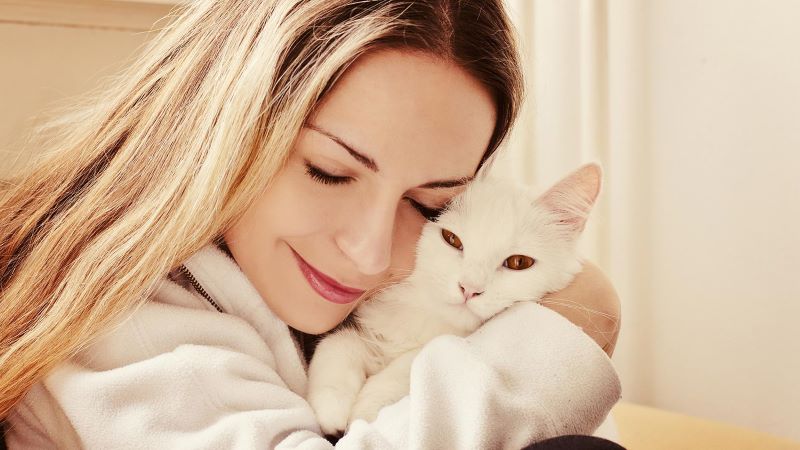Dogs wear their affection on their sleeve, er, paw, so to say. It is pretty obvious when a dog is happy--tail wagging, tongue hanging happily out of the side of his mouth. But when it comes to cats, it is more difficult to tell just what these fuzzy felines may be thinking, or what makes them happy. When she hears people say it is easy to show their dog affection, but impossible to demonstrate their love to their cat, Pam Johnson-Bennett says, it’s not harder, it’s just different. Johnson-Bennett, cat expert and author of CatWise, says, “Even within the species, cats can have particular preferences when it comes to the ways we show our appreciation.” It is important to find out what makes your cat tick, so you can be sure he understands your love for him.
If you read our post, Dogs and the Five Love Languages, you are already up to speed on using Gary Chapman’s Love Languages to show affection to your pets. This post is tailored to the ways you can show love to your cat.
Words of affirmation
Treats can go a long way, but praising your cat for good behavior, and rewarding him with extra playtime is also important. As Dr. Sandy M. Fink, clinical quality lead with pet health line whiskerDocs reminds us, “Behaviors that are rewarded will be repeated.” Rewarding good behavior with praise can strengthen the bond between you and your cat.
Acts of service
It is important to watch your cat to learn his body language and what he likes and dislikes. Cats are mysterious creatures, revealing themselves a little bit at a time. Take a moment to just observe how your cat plays, interacts with his toys and with other humans. You just might learn the desires of his heart! An act of service to a cat may be recognizing where he likes to be scratched, or respecting that certain time of the day when he wants to be left alone.
Receiving gifts
Maybe your cat needs some new toys to play with? Try the Kong Sway n’ Play, recommended by Real Simple in their feature The Vets Will See You Now in the May 2018 issue. This toy will tap into your cat’s hunting instinct. A toy mouse, infused with catnip and wearing a bell, is mounted on a stand. The mouse dangles from a flexible wand and makes unpredictable movements that will keep your cat entertained...for a little while. Fink also recommends clicker training as “a wonderful way to connect with a shy or timid cat.” You can read more about clicker training in PetMD’s post, How to Train a Cat.
Quality time
Interact with your cat! This can be either petting or scratching behind his ears (if that is a place you know he likes to be scratched) or engaging in an interactive play session, like stalking, chasing, and playing catching games. Have young kids? This can be a great assignment for a child, as long as you make sure he/she knows how to play appropriately with your cat. Dr. Sandy Fink recommends 5-10 minute sessions several times a day.
Physical touch
Cats are experts at rubbing and “marking” their owners with their scent, but don’t take this as an affront. In fact, Johnson-Bennett recommends cat owners consider this behavior as comparable to a kiss or a hug. One should accept this kind of love and reciprocate it as well. Grooming can also be a powerful form of physical touch. Keeping your cat’s coat, nails, teeth, and ears in good shape is an expression of love.
Put your cat first!
Overall, you can show your cat affection by creating a cat-friendly, stress-free environment in your home. Show your cat affection when you sense he is up for it, and respect your cat’s personal space when he needs some down time. Being in-tune with your cat will make life more enjoyable--for you and your feline companion! Also consider enrolling in pet insurance so you can make your cat's health needs a priority without worrying over the cost of veterinary care.

